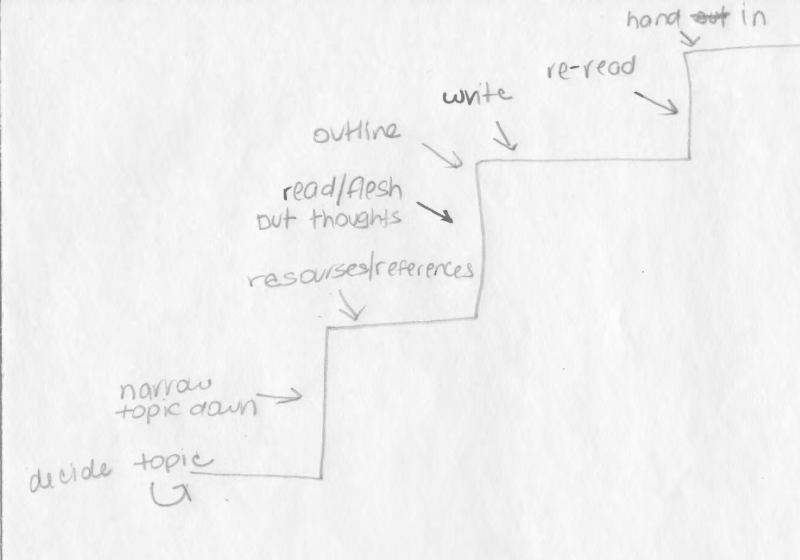A Brooklyn College senior talked to us about a paper she wrote for her Women’s Health course. This was one of the longer papers we heard about during our interviews, over 20 pages. This student clearly described (and drew) the scaffolding of deadlines that her professor used for this research assignment:
“It was due towards the end [of the semester], but like for instance, we had like little checkpoints along the way, like first you would be like okay, we’ll just submit our topics, like the third week of school. And then like a month later, she’d be like okay, we are going to submit sources, and then we would have like a couple of weeks to like submit sources and then she’d like check off and be like, oh this is like an appropriate peer-reviewed resource, and then at the end of the semester, it would be due at that time. But you could submit it at any time earlier, or we could have just talked to her about it anytime.”

While students didn’t use the term scaffolding themselves, we talked to many who described a scaffolded research assignment in one or more of their courses. Some disliked having many small deadlines rather than one large requirement at the end of the semester, though they also admitted that scaffolding helped keep them on track through the semester, especially given their many commitments at school, home, and elsewhere.
This student — in her final semester at college and headed to medical school after graduation — also shared her comfort with doing research using library and internet sources, and the knowledge she’d gained throughout her research-based classes:
“Before I’m able to have questions, most of my teachers are schedule like a class period where we have someone coming from the library, and I love that. Sometimes, it feels repetitive, but then sometimes I forget over the semester like what’s available, and usually for different classes, I need like different resources.”